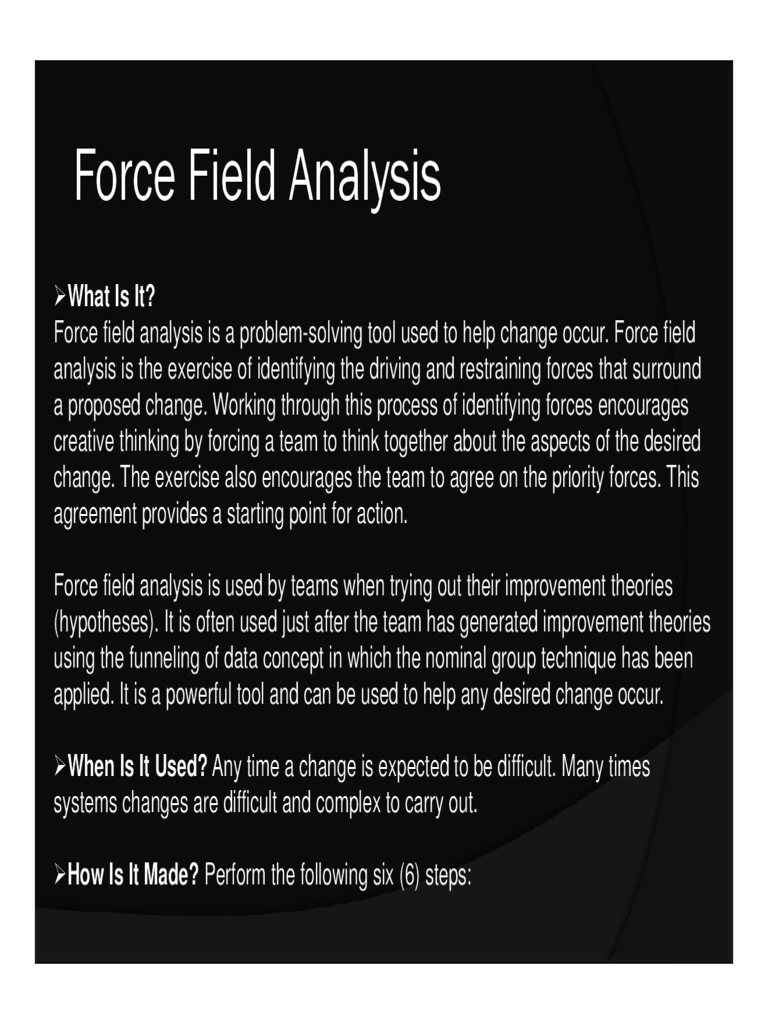Fillable Printable Force Field Analysis Chart
Fillable Printable Force Field Analysis Chart

Force Field Analysis Chart

Force Field Analysis
¾What Is It?
Force field analysis is a problem-solving tool used to help change occur. Force field
analysis is the exercise of identifying the driving and restraining forces that surround
a proposed change. W orking through this process of identifying forces encourages
creative thinking by forcing a team to think together about the aspects of the desired
change. The exercise also encourages the team to agree on the priority forces. This
agreement provides a starting point for action.
Force field analysis is used by teams when trying out their improvement theories
(hypotheses). It is often used just after the team has generated improvement theories
using the funneling of data concept in which the nominal group technique has been
applied. It is a powerful tool and can be used to help any desired change occur.
¾When Is It Used? Any time a change is expected to be difficult. Many times
systems changes are difficult and complex to carry out.
¾How Is It Made? Perform the following six (6) steps:

Force Field Analysis: S-14
2
Define the
change
Brainstorm
driving forces
Brainstorm
restraining
forces
Prioritize
driving forces
Prioritize
restraining
forces
Identify
actions

How to complete
¾Define the desired change or action: Agree on a simple statement to describe
the change to be made. An action would have been previously defined during the
Inquiry Process of your improvement planning (winnowing the data, perhaps using a
nominal group technique).
¾Brainstorm the driving forces: Driving forces are those, which currently exist
and tend to support, or drive, the desired change. It is important that these forces
are brainstormed first because they are likely to be the most important source of
ideas for an implementation plan.
¾Brainstorm the restraining forces: Restraining forces are forces, which currently
exist and are most likely to inhibit implementation of the improvement action.
Looking at the driving forces can sometimes help identify restraining forces, which
are sometimes opposites of driving forces.
¾Prioritize the driving forces: Discuss the driving forces and determine their
relative importance. Forces can be prioritized by using several different methods:
forced ranking, an open discussion, or a vote.
¾Prioritize the restraining forces: Use the same process as in Step 4 to prioritize
the relative importance of the restraining forces.
¾List the actions to be taken: Use the same sentence stem format (increase the
percent of adults that…) you used during the triangulation exercise.

Force Field Analysis Chart
4
Force Field Analysis
Desired Change:
Driving Forces (+) Restraining Forces (-)
ACTIONS:
1.
2.
3.
Support Document S-14

ForceFieldAnalysis
DesiredChange:
DrivingForces(+) RestrainingForces(‐)
ACTIONS:
1.
2.
3.



